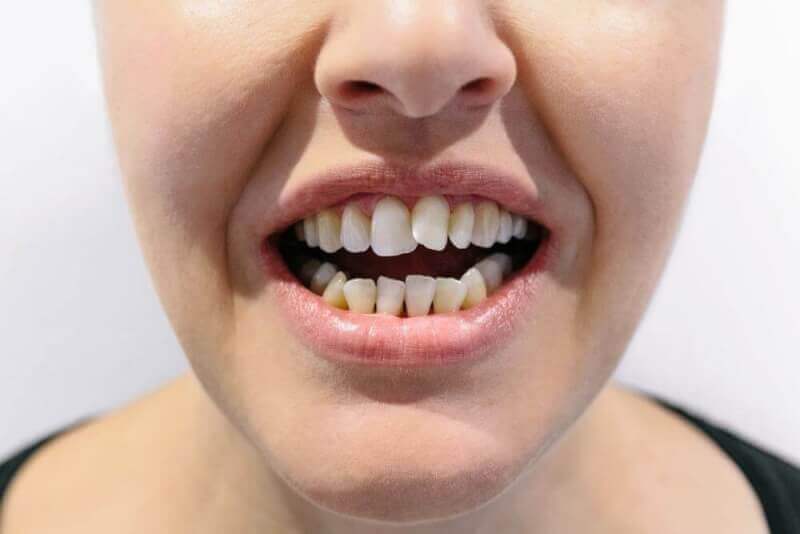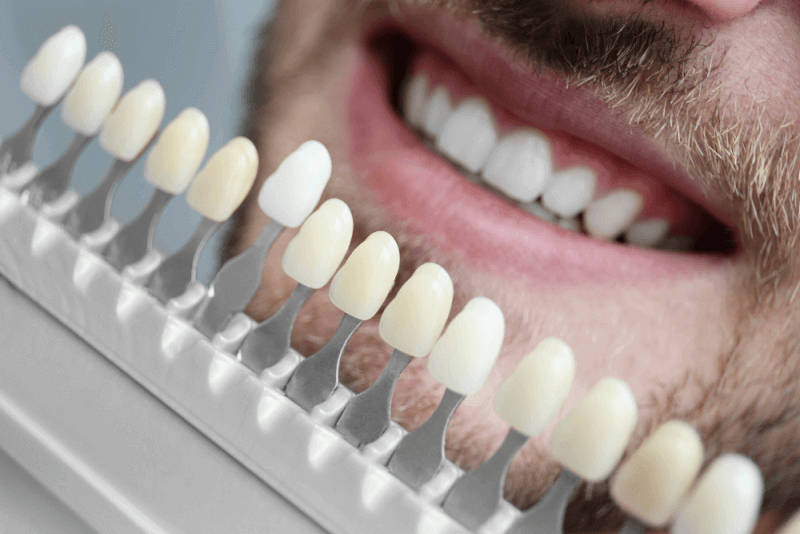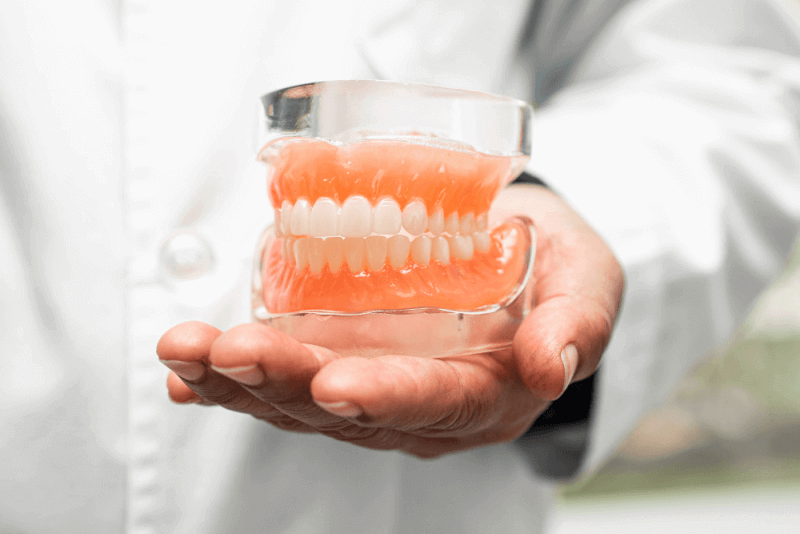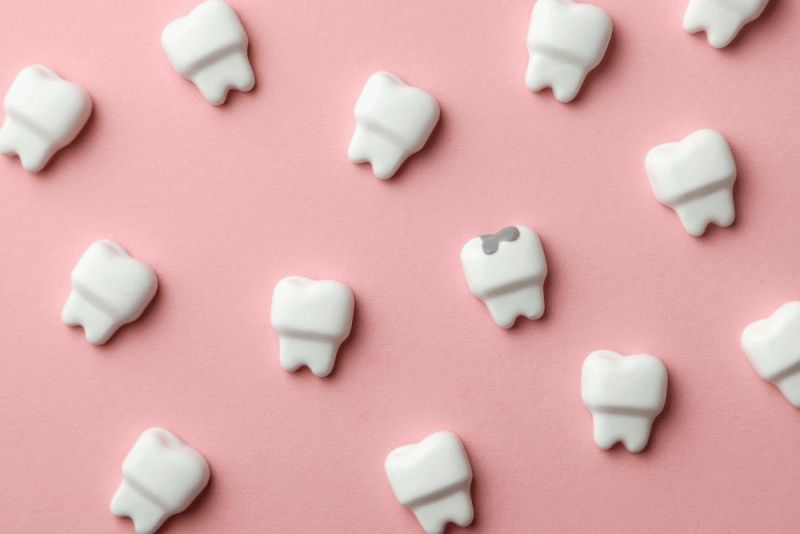What is a crooked teeth?
Although the crooked teeth structure is perceived as an aesthetic problem, not being treated causes health problems in the jaw joint and teeth. Although the most important cause of crooked teeth is genetic, early diagnosis and treatment can prevent the occurrence of this condition and it is also possible to treat it in a short time.
Crooked teeth can be briefly explained as the situation where the teeth that should be placed on the jawbone have different alignments due to different reasons. Crooked teeth are also called crooked teeth.
Causes of crooked teeth
There are many different causes of crooked teeth. Although it usually occurs due to genetic factors, the following are also among the reasons that can cause crooked teeth.
Jaw size
In the history of mankind, because of the unprocessed nature of food, the diet was based on harder foods. This resulted in bigger and stronger jaw bones. However, since the foods we consume today are processed and soft, it is possible to swallow food with less chewing. That is why people's jaws have shrunk. However, the fact that the number of teeth remained the same led to the appearance of crooked teeth.
Bad myofunctional habits
Myofunctional behaviors are repetitive behaviors that cause people to affect the function of the oral or facial muscles. These include habits such as bottle use, thumb sucking and pacifier use. Children who continue to suck their fingers, especially after the eruption of their front teeth, may have their front teeth affected. This habit may cause the front teeth to be pushed forward and may also cause open bite. In addition, if children's finger sucking habits continue after the eruption of permanent teeth, misalignment of the front teeth may also occur. Since thumb sucking also causes narrowing of the upper jaw, narrowing of the upper jaw is also possible. To prevent this, children need to stop this behavior at an early age.
Pushing the tongue
Tongue thrusting behavior has almost the same effect on the teeth as thumb sucking. In people with this habit, teeth can protrude forward.
Misaligned jaw
In the case of a misaligned jaw, also called malocclusion, it is the lack of correct alignment in the bite of the upper and lower teeth. This is due to habits such as thumb sucking, pacifier use and nail biting.
Genetic transmission
The presence of crooked teeth in one or both parents increases the likelihood of crooked teeth in children. Genetic reasons include having too many teeth, having teeth that are too big or having a small upper jaw. In addition, the presence of deep bite or open bite in the patient's parents can also be genetically transmitted to children. In addition to these genetic characteristics, children may also have genetically inherited orthodontic problems such as crooked teeth, overbite or underbite. These genetically caused problems cannot be prevented, but they are largely treatable.
Poor oral hygiene
Although children's milk teeth are ignored by many parents, they are extremely important because they act as placeholders for permanent teeth. For this reason, if children lose their milk teeth faster than they should, the other milk teeth remaining in the mouth can replace the lost teeth. In this case, it may cause crooked teeth formation by narrowing the area of the permanent teeth that will come out later. For this reason, it is important to pay attention to oral hygiene in both infants and children and to have regular dental check-ups.
Malnutrition
Poor eating habits are also among the causes of crooked teeth, as they can lead to teeth decay and poor teeth development in children. For this reason, babies and children should be careful not to adopt habits that will cause teeth decay.
Injuries and traumas
Impacts to the mouth or face can cause the teeth to move out of place. This can cause one or more teeth to become crooked.
Gum diseases
Diseases or injuries to the gums affect the shape of the teeth. These diseases can cause loosening of the teeth, which can lead to an impaired bite or a change in teeth alignment.
Aging
With the advancement of age, especially the front teeth begin to shift forward. The reason for this is that the advancing age causes the density of the jawbone to decrease. Loss of bone density also causes a change in the shape of the jawbone. These factors cause the appearance of crooked teeth with the advancement of age.
Causes of crooked teeth in adulthood
Crooked teeth are not only caused by infancy or childhood. Some adults may also develop crooked teeth as they get older by changing the alignment of their teeth. The most common reason for this is a one-way diet. In addition, jaw injuries are one of the biggest causes of crooked teeth in adulthood. Finally, nasal congestion or habitual breathing through the mouth and some facial diseases also cause crooked teeth in adulthood.
Symptoms of crooked teeth
Crooked teeth are classified as mild or severe. Some cases of crooked teeth can be recognized by the patients' smile. In some cases, crooked teeth are not noticed during the smile because they are located at the back. However, crooked teeth have a negative impact on the functioning of other teeth. Other symptoms of crooked teeth include the following:
- Plaque formation
- Teeth decay
- Gum disease
- Teeth clenching
- Shifting the chin
- Jaw pain
- Headache
Diagnosis of crooked teeth
In order for the crooked teeth to be diagnosed, it is sufficient for the orthodontist to perform a physical examination. However, X-rays and photographs of the face may be required to determine the treatment method to be applied. For some treatments, it may also be necessary to take impressions of the patient's mouth and teeth.
X-rays are used to determine the position of the patient's teeth roots and also to identify teeth that have not yet erupted. In addition, cephalometric or panoramic x-rays can also be used to determine the relationship between the jaws and the skull.
Treatment of crooked teeth
There are different treatment options in the treatment of crooked teeth. Orthodontic treatments come first among these treatments. If these treatments cannot be applied, then fillers and prosthetic procedures are used.
One of the most preferred treatment options in the treatment of crooked teeth is braces. It can be applied especially if the teeth and gums are strong enough to hold the braces. Among the treatment methods that can be used in the treatment of crooked teeth are the following.
Metal braces
For patients with complex crooked teeth, the preferred treatment option is the application of metal braces. This treatment method uses flexible wires together with bands and brackets.
Ceramic braces
The brackets used in ceramic braces, which perform the same task as metal braces, are ceramic. In addition, since the wires connecting the brackets are transparent or teeth-colored, they provide a more aesthetic appearance compared to metal braces. However, ceramic braces are less resistant to impact and more prone to staining.
Transparent plaque treatment
Transparent plaque treatment is the least noticeable of the medical devices used in the mouth. For this reason, transparent plaque application is usually applied to young people and adults. The transparent aligners used in the treatment are specially produced according to the mouth size of the patients.
Lingual braces
The parts of the teeth that are in the inner part of the mouth and facing the tongue are called the lingual surface. Lingual braces fulfill the same function as metal braces, but are applied to the back of the teeth. Cleaning the teeth is more difficult for patients using this method. In addition, it is not a treatment method that can be applied to every patient. It is not a suitable method especially for patients with severe tooth distortion.
Crooked tooth surgery
Another method used in the treatment of crooked teeth is surgical methods. This method is especially applied to patients with problems in jaw development. This method, which allows the jaw bones to be repositioned, is also called orthognathic surgery.
Coating treatment
Another treatment option for patients who do not want to use braces is dental crown applications. In this application, crooked teeth are cut and reduced in size and dental veneers, which can be produced from various materials, are glued on. However, dentists generally do not recommend this treatment option because healthy teeth are involved in this procedure.
What are the problems caused by crooked teeth?
Failure to treat crooked teeth can affect patients' living standards. These effects of crooked teeth include the following.
Periodontal disease
The problem of crooked teeth makes it difficult to maintain oral hygiene. This situation causes many gum diseases, especially tooth decay.
Chewing and digestion
If the teeth are crooked enough to prevent proper chewing, the food that is not broken down sufficiently causes patients to experience digestive problems.
Excessive wear
Crooked teeth also cause physical damage to the structures in the mouth. These include jaw joint disorder, jaw tension, cracked teeth, jaw disorders and gum problems. In addition, crooked teeth can also cause patients to feel headaches.
Speech difficulty
Misalignment of the teeth causes the sounds to sound wrong. This leads to speech impairment in patients.
Lack of self-confidence
In addition to these, the unaesthetic appearance caused by the teeth can cause patients to lose their self-confidence. In some patients, this can lead to avoidance of socialization.
Things to consider to avoid crooked teeth
The most important factor in the formation of crooked teeth is genetics. However, there are some things that patients can do to prevent this situation. The first of these is regular dental check-ups and, of course, oral hygiene.
In addition, especially children with permanent teeth should be prevented from sucking their fingers. Attention should also be paid to the correct development of chewing and speech in developing children.







